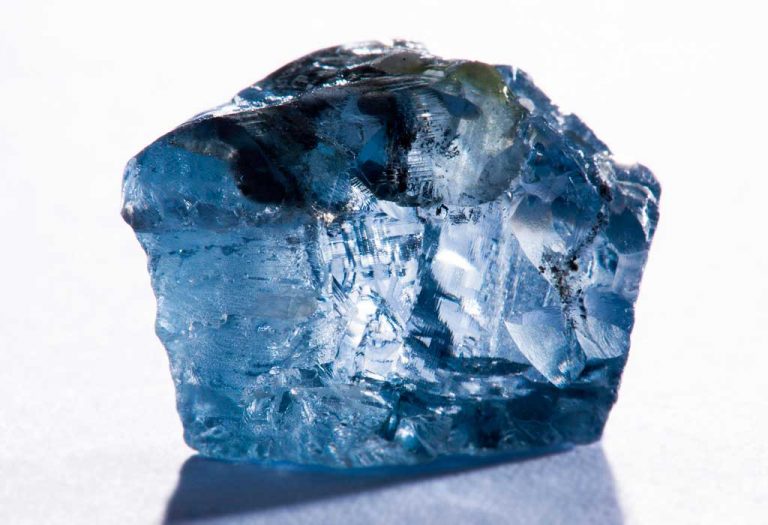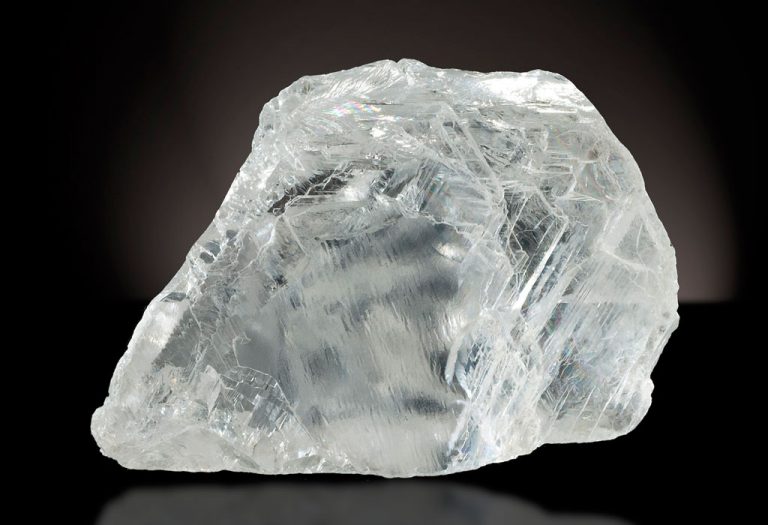Diamonds: Description, Properties, Types, Applications
Diamonds are probably the most famous and attractive type of stone in the world. In many languages of the world, meaning this word is also commonly called a gem. Amazing properties are attributed to diamonds, their beauty has been sung by poets. Both a rough diamond and a diamond add charm and delight to any gem
In this article, we will tell you how diamonds are mined and where they come from in the earth’s crust. What do geologists, physicists, chemists, jewelers, and of course, astronauts say about this amazing stone? You’ll learn about the world’s most famous specimens, the healing properties of the world’s hardest minerals, and more.
Stone history
Even the youngest diamonds are almost as old as our planet. They are formed in the Earth’s mantle – a natural “fake” where high temperatures and great pressure reign. From the mantle, they are pushed upwards during volcanic eruptions, when so-called kimberlite pipes are formed. Every fifth such tube contains a precious stone, naturally unknown.

Scientists have discovered entire clouds of diamonds surrounding several stars older than our Sun. Sometimes beautiful stones fall on our planet as mentioned. So the next time you put on your favorite diamond necklace, think about what you’re touching.
Ancient people, admiring the incredible hardness of this stone, created many myths and legends about the origin of diamonds. India was the main source of gems, and this became one of the reasons for the veil of mystery that surrounded this country in ancient times. It was there that they began to dig them out for the first time, about three thousand years BC. At that time they did not know how to process diamonds, they were only set in gold or silver.
On the European continent
In Europe, the first gems appeared during the time of Alexander the Great, who learned about them from the conquering Persians. The war in India, which turned deadly for the great commander, gave rise to many legends. For example, the war with the Indian king Por became a battle with the mythical dragons that guarded the storyteller’s diamond mines.
The ancient name is known as Hira is “Fari”, as the Indians called it. The Greeks called him Adamus – imperishable for their firmness, and the Romans transformed this word into “dioramas”. The Arabs called the stone “Almas”, which means “hardest”, the Turks called it Elma.

In most European languages, either the Latin name (English diamond) or Arabic.
The most famous of the gems was the real breakthrough in history was the discovery of the cut. It took place during the Renaissance in the city of Bruges, now in Belgium. Belgian jewelers, who have become the most famous in Europe, call them cut diamonds, which means “sparkling” or “sparkling”. The price of precious stones, already high, skyrocketed.
By then, deposits in India had almost completely depleted after four and a half thousand years of production. But the discovery of America proved to be very useful: the Brazilian mines were much richer than the Indian sector, which had lost its former glory.
what is this stone
Diamond, which is an allotropic cubic form of carbon, is characterized by metastability under normal conditions, i.e. the ability to remain arbitrarily long.
Diamond slowly transforms into graphite at high temperatures in a vacuum or an inert gas.
Most scientists (mineralogists, physicists, and geologists) believe that the formation of diamonds occurs in the earth’s crust at a depth of about 200 km at a pressure of at least 50,000 atmospheres and very high temperatures.
Diamonds are carried to the Earth’s surface by volcanic magma flows during the formation of kimberlite pipes (which are pipe-like channels 400 m to 1 km in diameter), accompanied by explosions during volcanic eruptions.
Geologists often find diamonds in meteorites that have fallen to Earth. Their age, according to the results of some studies, is from 100 million to 2.5 million years, in some cases exceeding the age of the Sun.
Diamond formations sometimes occur as a result of impact metamorphism, when massive meteorites fall. This is the source of the impact diamond found in the Popigai meteorite crater in Siberia.
diamond deposits
Diamonds are mined on all continents except Antarctica. The following regions are the richest in gems:
- India, especially the eastern part of the Deccan Hills. It is the oldest gemstone mining region in the world and its reserves are now severely depleted.
- Brazil, the provinces of Minas Gerais and Bahia.
- South Africa, Cape Town and Namibia, and Transvaal. The term “kimberlite” is properly derived from the name of the Kimberley region, where most of the stone was found. Thousands and thousands of prospectors around the world dug the famous Big Hole hand in hand day and night.
- Urals and Yakutia as well as Kazakhstan.
It’s interesting!
The first diamond was discovered in Russia in July 1829. This event took place in the Krestvozdvizhensky gold mine in the Perm Province (Urals). The stone weighing half a carat was found by a 14-year-old surf farmer Pavel Popov, for which he received his freedom. A little later, Kishore was brought to the same place by members of Baron Humboldt’s expedition, who discovered several other small stones. At this point, the cherished place is called “Diamond Key”. Today the richest Russian deposits are located in Yakutia. At the end of 2019, it was there that the first diamond in the history of world mining was found, “Matroshka” – a jewel, inside which another small pebble moves smoothly.
About three-quarters of the world’s stone is produced and controlled by the three largest corporations – Alrosa, De Viers, and Rio Tinto. Production volumes have recently decreased, and prices are increasing, which encourages many people to use synthetic, artificially grown stones.
Industrial diamond deposits are scattered all over the planet, Antarctica being the only exception.
As a percentage, the production volume was distributed as follows:
- Russian company Alrosa, which also develops mines in Botswana, Zimbabwe, and Angola – 28%.
- South African corporation “De Beers”, which produces in Tanzania, Namibia, South Africa, and Botswana – 20%.
- Australian-British miner Rio Tinto – 13%.
- Canadian company Dominion Diamond – 6%.
- South African company Petra Diamonds – 3%.
- The remaining 30% of production volume is accounted for by all other diamond mines.
Player submission
There is another type of deposit – a placer deposit. Such deposits are formed by the erosion and exposure of areas rich in diamondiferous rocks
World production is distributed as follows:
- Botswana – 25% (considering the cost of raw materials raised).
- Russia – 20%.
- Canada – 15%.
- South Africa – 10%.
- Angola – 10%.
- Congo – 10%.
- Australia – 5%.
- Namibia – 5%.
Chemical and physical properties of diamonds
From a chemical point of view, the formula of a diamond is extremely simple – it is composed almost entirely of carbon, that is, it is the same graphite used in pencil lead. In addition, the following substances can enter the diamond molecule, sometimes entering the crystal lattice:
- Calcium;
- Boron;
- Nitrogen;
- Magnesium;
- Silicon;
- Aluminum.
Schematic representation of a diamond crystal lattice
In nature, pure carbon does not occur, and it is not necessary: the unique properties of minerals are given by impurities, as well as the crystal lattice. It is its structure that provides the incredible hardness of the stone. Such miracles of nature cannot occur under conditions on Earth’s surface, requiring the heat and pressure of the planet’s interior.
A diamond consists of a large number of cubic structures. These structures are tightly bound together with 18 carbon atoms, as well as small impurity atoms. Thanks to this structure, the stone takes on a unique Rockwell hardness – maximum. Also, a gemstone, when X-rays hit it, starts to glow in different colors. This beautiful sight also has a real practical meaning – with its help radiation is determined.
A diamond’s physical properties have no parallel in the world of precious stones:
- The king of gems has a very high refractive index of light and its dispersion (scattering). That’s why diamonds play so brilliantly in the sunlight.
- The density of a diamond is unmatched among the natural materials available to mankind.
- From the point of view of the Mohs scale, nothing is harder than a diamond, the stone gets 10 points, the highest index. Because of this, diamonds cannot be scratched and are very difficult to process. However, with all the hardness of the gem, during extraction, cracked specimens are often found, which jewelers have to split under pressure.
- The crystal water of the original gem has almost no electrons. This explains its excellent insulating properties.
- Diamonds are not sensitive to acids but some alkalis can damage them.
- The melting temperature of the rock is three thousand degrees at a pressure of 11 gigapascals (this is a lot and possible only in laboratories).
- The burning temperature of a diamond is 850-1000 degrees in air or 800 under a flow of pure oxygen.
- If a diamond is heated to two thousand degrees without access to air, its lattices begin to collapse, the stone turns into ordinary graphite and explodes. This can be considered as the boiling point.
- Contrary to common perception, a diamond can be easily broken by hammering or even damaged by being dropped from a height on the floor – its strength is low.
- Another unique property of stone that makes it possible to detect fakes is its high light refraction. The diamond looks very clear and transparent, but if you put it on the page of a book, you cannot read the text through the crystal. For this reason, diamond jewelry is never aligned – the back of the bezel will not be visible in any way.
Diamond color variations
Diamond color is a vague concept. Almost all types of diamonds are characterized by two main characteristics: their color and luminescence, that is, the shade of light transmitted through the stone. Most mined diamonds are yellow, partially neutralized by blue luminescence, resulting in the stone being colorless to the human eye.
The color palette of these gems is large:
- Black;
- White;
- yellow;
- Brown;
- blue;
- Red;
- Blue
“Pure water” mining has few clear crystals. Gem quality gemstones have only blue luminescent crystals and the complete absence of yellow tones in their color, only a light brown tint is allowed.